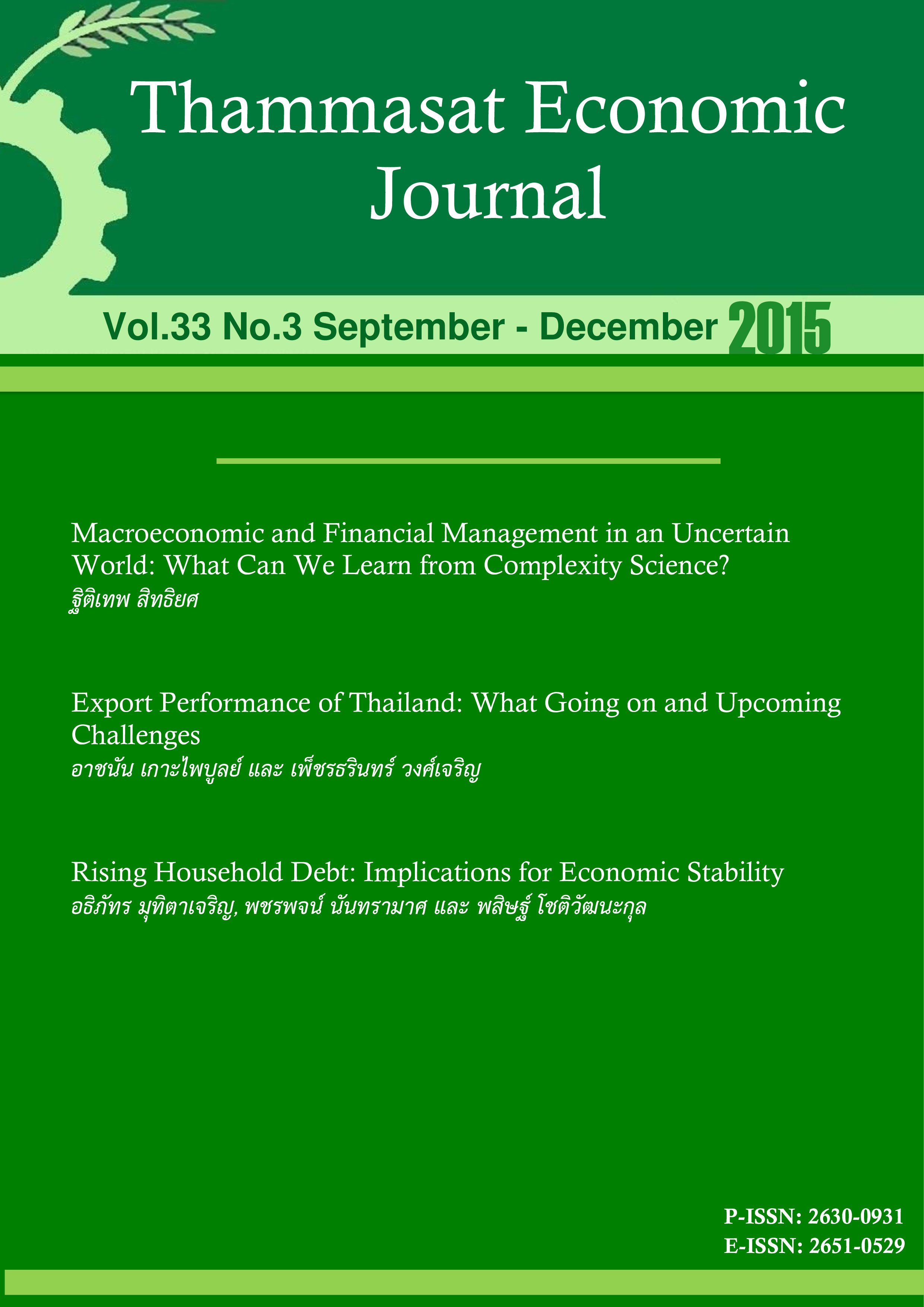Rising Household Debt: Implications for Economic Stability
Keywords:
Household debt, economic stability, economic growthAbstract
This study examines whether there is empirical ground to the conventional wisdom that the rising household debt Thailand experienced over the past few years has increased risks to macroeconomic stability. We find that while the recent debt surge does not raise short-term risk to the financial system, it has represented a key impediment for economic growth. We also establish the critical DSR threshold of 40%. Above this level, households in all occupations exhibit a significant increase in their predicted probability of having difficulty paying their debt. On the threats associated with future interest rate hikes, our micro-simulation model indicates that low-income households are likely to see disproportionate increase in DSR. The rate increases will also threaten households who are `almost’ financially vulnerable and the impacts on consumption growth will not be limited to the low-income groups.
References
2. Chung K. (2009). Household Debt, the Savings Rate and Monetary Policy: the Korean Experience. BIS Paper No.46, pp. 32-47.
3. Deaton, A. (1997). The Analysis of Household Surveys: A Microeconometric Approach to Development Policy, Baltimore, MD: Johns Hopkins University Press.
4. Debelle, G. (2004). Household Debt and the Macroeconomy. BIS Quarterly Review, March 2004, pp. 51-64.
5. Drehmann M. and M. Jeselius (2012). Do Debt Service Costs Affect Macroeconomic and Financial Stability?. BIS Quarterly Review, September 2012, pp. 21-35.
6. Filardo A. (2009). Household Debt, Monetary Policy and Financial Stability: Still Searching for a Unifying Model. BIS Paper No.46, pp. 32-47.
7. Ghani, N. A. (2009). Household Indebtedness and Its Implications for Financial Stability in Malaysia, pp. 67-88.
8. IMF (2012). Dealing with Household Debt. International Monetary Fund, April 2012, pp. 89-112.
9. Kang, T. and G. Ma (2007). Credit Card Lending Distress in Korea in 2003. BIS paper No. 46, pp. 95-106.
10. Kiatipong A., S. Wilatluk and C. Nalin (2007). The Wealth and Debt of Thai Household: Risk Management and Financial Access. Bank of Thailand Symposium 2007.
11. Ma, G., E. Remolona and I. Shim (2009). Household Debt: Implications for Monetary Policy and Financial Stability. BIS Paper No. 46, pp. 1-3.
12. May, O. and M. Tudela (2005). When is Mortgage Indebtedness a Financial Burden to British Households? A Dynamic Probit Approach. Working Paper No. 277, Bank of England.
13. Mian, A., K. Rao, and A. Sufi (2012). What Explains High Unemployment? The Aggregate Demand Channel. NBER Working Paper No. 17830 (Cambridge, Massachusetts: National Bureau of Economic Research).
14. Rinaldi, L. and A. Sanchis-Arellano (2006). Household Debt Sustainability. What Explains Household Non-performing Loans? An Empirical Analysis. Working Paper Series No. 570, European Central Bank.
15. Tientip S. (2009). Household Sector and Monetary Policy Implications: Thailand’s Recent Experience. BIS Paper No.46, pp. 136-161.
16. Weale M. (2012). Household Behaviour and Policy Analysis. New Zealand Government Economists’ Network 2nd Annual Conference, Wellington, December 2012.










